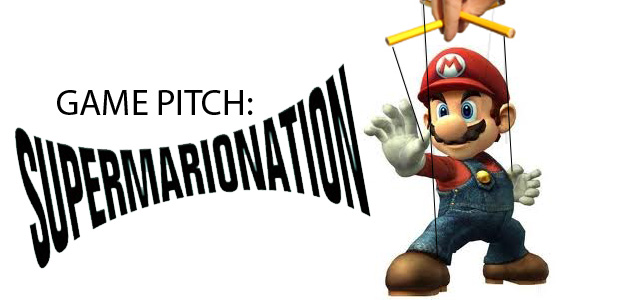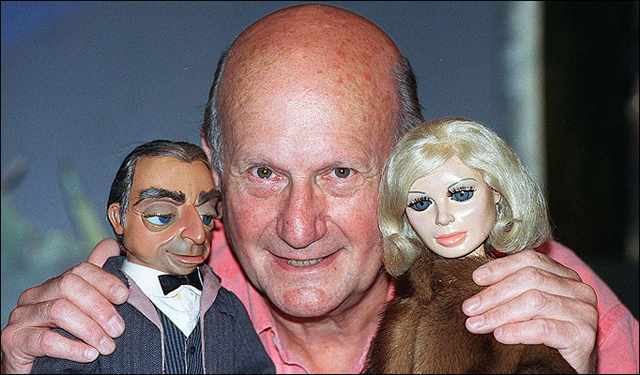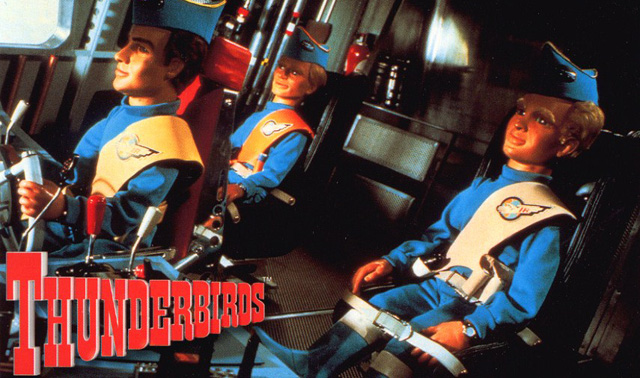
Thunderbirds
Captain Scarlet
Space 1999
UFO
Stand By For Action!
Gerry Anderson created some of the most iconic marionette puppet television shows of the 60s and 70s, helping spawn a generation of sci-fi fans and influencing the beginnings of series like Star Trek and Star Wars (and, to an extent, Child’s Play). The life-like puppets represented some of the first instances of the uncanny valley, with exaggerated features and jerky movements used to mimic humans placed in action-filled situations.

The issues that the “puppet masters” faced dealt with accurate control of the marionettes, managing the necessary equipment (sticks, strings, electronics), and constant re-shoots if the motion of the characters didn’t look right. With this gaming generation’s greatly increasing emphasis on motion control interfaces, the ability to create quality supermarionation experiences exists.
The effect is a lot like toys coming alive.
A game experience based on supermarionation would have to capture that feeling. Controlling toys is familiar to both children and adults, and using a modern motion controller would be the optimal way.
Playing the Game
Controlling a marionette with a Wiimote or Move is a natural fit: hold controllers horizontally, raising and lowering them to move left or right side hands and feet, pushing buttons to activate eyes and mouths. If it may seem over-complicated — or waggle-overdosed — then the alternate option would be to control only the arms, with the analog stick controlling movement. Think similarities to WiiSports Resort‘s sword-fighting or the upcoming Legend of Zelda: Skyward Sword. With Microsoft’s Kinect the motions would be that much more direct.

Where the idea really takes off isn’t so much the direct manipulation of the limbs, but the manipulation of the limb controls. Moving a hand up and down isn’t rocket science, but moving the stick that controls the hand may provide more of a unique challenge, especially when precision is required. Jumping may be easy in one level, with just a slight twitch of a WiiMote upwards. But, another level might add in wind that sends Hero’s legs flying in opposite directions, requiring the user to balance and manipulate the controllers for proper landings. Add in a splash of rag doll physics and the notion of playing with toys comes to life even more.
Remember: we wouldn’t be controlling the characters… we’d be controlling their motions.
Becoming Anderson

Capitalizing on known properties like Thunderbirds or Team America, a game in the genre suddenly has a vast, established world to play in, including the exaggerated and already game-like plots. Nintendo, always willing to throw their characters into new methods of play, would be wise to place Mario into a game about supermarionation, naming it… Super Mario Nation. Pun intended.
It’s with that presumption that the game can become that much more interesting. Consider the idea of taking on Anderson’s shoes and becoming the director (or directee). The game would essentially be a movie, with the goal of the player being to control Mario as the movie is played out.
Each “level” would be a pre-determined scene: Mario jumping along floating mushroom platforms to get a key, swimming through a spike-infested sea to escape a sinking ship, or engaging in battle with enemies to rescue Princess Peach… all designed to play out with enough plot and story that the goal isn’t simply to get to the flagpole, but to act and control the character accurately as they advance. This minimizes repetition and helps to keep each section fresh without becoming too minigame-like.
I’ll never stop being in awe of the television marionettes of bygone eras, as every step or blink of an eye was a laborious, perfectionist endeavor. The culture, the craftsmanship of the dolls, the self-awareness of the dolls — all of it seemed like toys coming to life. With gaming’s advances in technology, we can today live out the fantasies we had as kids to be a part of these experiences behind the camera instead of just staring at the screen.


No Comments